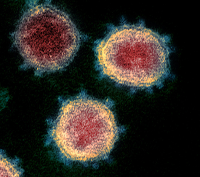— from Washington State Department of Health —

OLYMPIA – Today the Washington State Department of Health (DOH) released the latest statewide situation report, which shows COVID-19 transmission is still accelerating across most of the state as of the end of June.
The report highlights concerning COVID-19 trends in Spokane County, the Puget Sound, north-central counties and southwest counties. The reproductive number—the estimated number of new people each COVID-19 patient will infect—is still above one in both eastern and western Washington, meaning the number of cases is still increasing.
Transmission is slowing in Yakima County, an encouraging sign that interventions like wearing face coverings can be effective. However, Yakima’s progress is still at risk, with case counts only down about 30-40 percent from its peak number of cases. The county must continue to strictly follow the measures put in place to slow the spread of the disease to avoid another increase.
The report also estimates the percentage of the population actively infected with COVID-19 in the Puget Sound area (King, Snohomish and Pierce counties), Spokane County and Yakima County. In the Puget Sound area, the percentage of the population with COVID-19 has reached levels comparable to those seen in late March and is increasing. In Spokane County, estimates of this percentage are also rapidly increasing. The estimates for Yakima County are improving compared to previous calculations, but the situation remains concerning.
The report also summarizes hospitalization trends, which vary across the state. King County hospitalization numbers are stable despite increasing case counts, likely because the bulk of those increases are in people under 40. Hospitalizations continue to trend upwards in eastern Washington except for Yakima County. In particular, Spokane County is experiencing a notable uptick in hospitalizations.
The report includes a comparison of new cases by age in six counties. Spokane County and Puget Sound are seeing a high frequency of infections in younger age groups. While younger people may be less likely to get seriously ill, they may still be spreading the virus to older and more vulnerable populations.
DOH partners with Bellevue-based Institute for Disease Modeling, Fred Hutchinson Cancer Research Center and the Microsoft AI for Health program to develop this weekly report. More COVID-19 data can be found on the DOH website and in the state’s risk assessment dashboard.
The DOH website is your source for a healthy dose of information. Find us on Facebook and follow us on Twitter. Sign up for the DOH blog, Public Health Connection.
**If you are reading theOrcasonian for free, thank your fellow islanders. If you would like to support theOrcasonian CLICK HERE to set your modestly-priced, voluntary subscription. Otherwise, no worries; we’re happy to share with you.**








The ferries were full again with tourists yesterday. More tourists means more risk for the vulnerable population of San Juan County, I am curious to know where all these tourists are staying when visiting the islands?